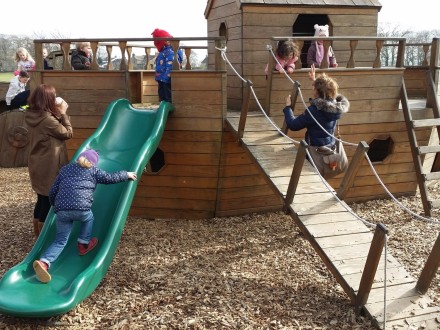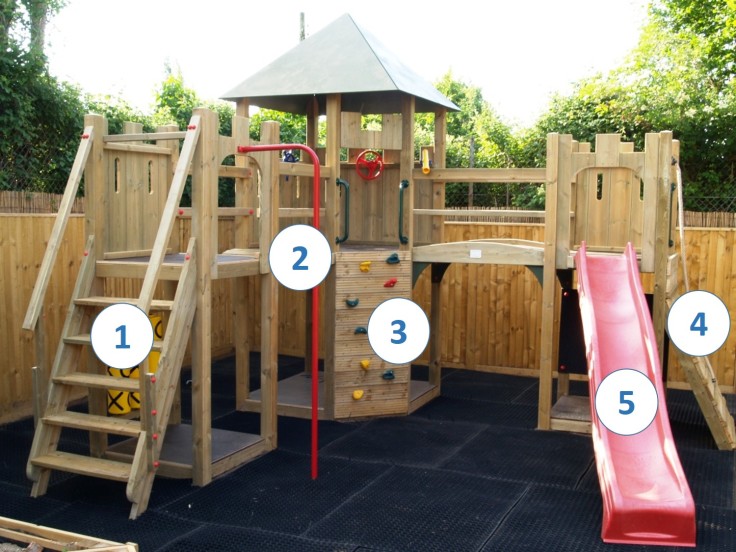A short post about climbing frames: pitch high and support all pupils in reaching for that level.

This is a photo of my two children at the ‘Yorkshire Dales Ice Cream Farm’ (not ‘pick-your-own’, sadly) taken about three years ago. They are the oddly gnomic-looking child at the top of the slide and – typically – the one blocking the slide by climbing up it. (So proud.)
To me, the image suggested a useful metaphor for how differentiation might work in the classroom – at least when it is operating properly. The ‘deck’ or upper platform is accessible for all children, of all climbing-abilities. Some will scale the dauntingly-spaced rungs of the big ladder; some will walk up the ramp, guided by safety ropes. And some will go the wrong way up the slide – difficult, subversive and more fun. For each child, there’s a challenge.
The point, of course, is that there isn’t a lower platform for some and a higher one for others. There isn’t a lesser goal and a higher goal. There are just different kinds of scaffolding or reassurance.
In teaching, of course, it is a metaphor for pitching high and then supporting all pupils in reaching for that level, which is the essence of successful ‘mixed ability’ teaching. It is an image for the absence of differentiated objectives – ‘All… Most… Some…’, ‘Grades 3-5, Grades 6-7, Grades 8-9’, or whatever grim form they may take.
There are, inevitably, lots of potential flaws in this metaphor. One very important one is this: in the play park children are generally choosing their own route, and they will tend to self-challenge, going for the way up that gives them most sense of personal achievement. However, in the classroom, differentiation through pupil choice rarely works. To me, this image is explicitly not about giving pupils a menu of gradated activities. In fact, it is not about different tasks at all. Rather, it is about the adaptations that teachers make for pupils in their teaching (in the scaffolding they provide, in their modelling, in their questioning, in their explanations and in their feedback) in order to provide appropriate degrees of struggle and challenge, within a culture of high expectations.
See also: Folding feedback into learning
See also: Who is doing what in the classroom? A tool for planning and reflection

